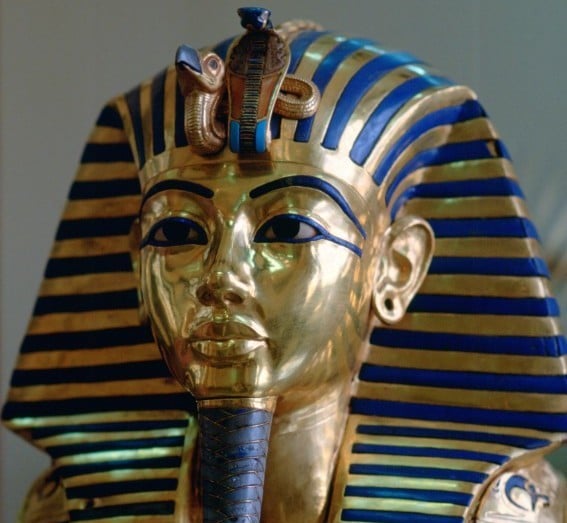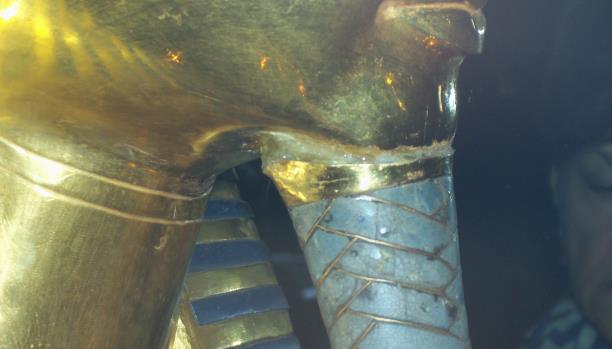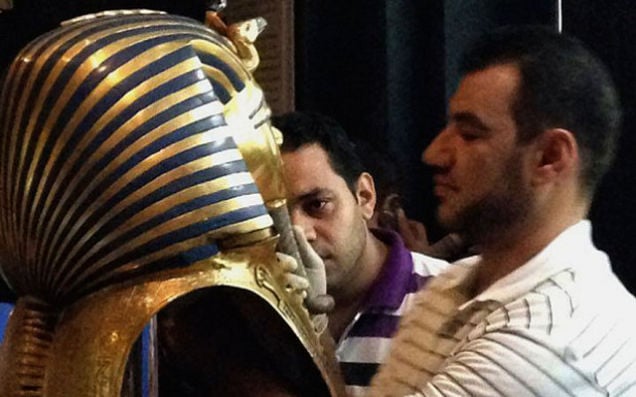Art World
Work Has Finally Started on Botched Repair of Tutankhamun Funerary Mask
Is this catalog of disasters finally at an end?

Is this catalog of disasters finally at an end?

Amah-Rose Abrams

Work on removing a crust of dried glue from the mask of the Egyptian boy king Tutankhamun, following a botched restoration, has commenced.
This past Saturday, the Cairo Museum, Egypt, who have brought in German consultant Christian Eckmann, set about returning the priceless 3,000-year-old artifact to its former glory.
“Tutankhamun’s mask has been transferred from its exhibition hall to another room in the museum that has been turned into a restoration laboratory,” Mushira Mussa, a spokeswoman for the antiquities department, told AFP.
This latest development will hopefully see an end to the catalog of mishaps that have befallen the stunning mask.

A layer of epoxy separates two pieces of King Tut’s funerary mask after a botch repair job.
Photo: Al-Araby Al-Jedeed.
The botched repair attempt was first reported by Arabic language news site Al Araby Al Jadeed earlier this year, although the history of the epic restoration-fail goes back a little further.
Restorers claim that the mask was initially repaired badly in 1941, meaning that the beard was already loose.

The restoration crew is seen gluing King Tut’s beard back on at the Egyptian Museum in Cairo on August 12th, 2014.
Photo: Jacqueline Rodriguez, courtesy the AP.
For some reason, when conservationists were changing a lightbulb in the display case this past August, the beard was dislodged, and they crudely glued it back in place.
Undeterred by the unprofessional looking result, museum workers then scraped the mask trying to remove the visible dried glue, dimmed the lights, and put the mask back on display.
Reports of what had taken place soon emerged.
Why it took several months and a change of staff for the restoration to take place is a question that remains to be answered.
The golden burial mask has kept a major secret for centuries. Last year, Tut underwent a “virtual autopsy,” with CT scans, genetic analysis, and over 2,000 digital scans used to generate a computer model of the pharaoh. This research indicated that Tut was born with the misshapen features and prominent overbite that he took to his grave at 19.
Another explosive secret Tut literally took with him to the grave may be unraveled soon.